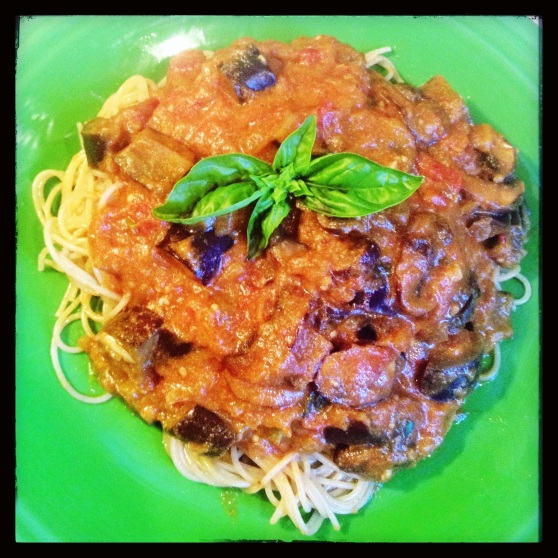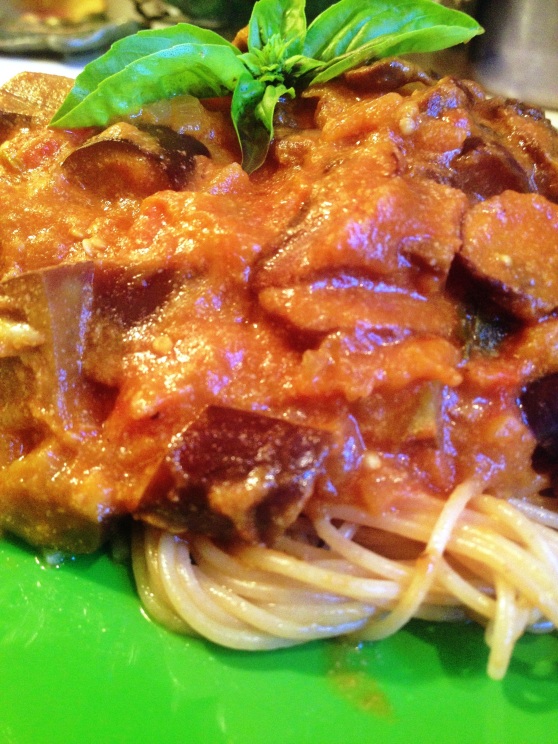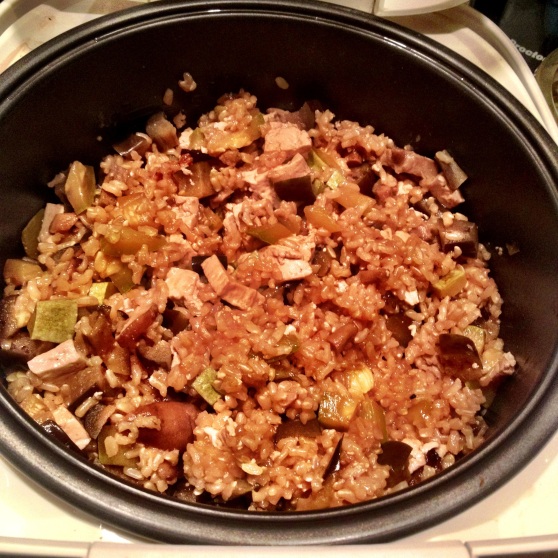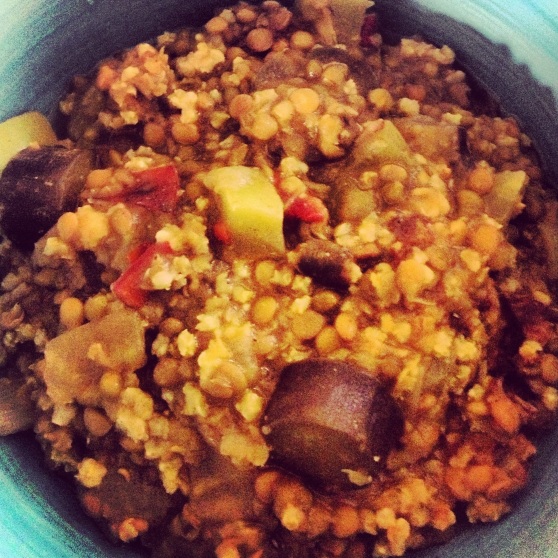I’m pretty sure I broke just about every rule in Italian cooking tonight. I made vegan vodka sauce and I used heirloom tomatoes, almond milk, and nutritional yeast to do it. Not only that, I put eggplants and mushrooms in the sauce. I can just hear all the Italian grandmas rolling over in their graves! But since I’m not Italian (I’m American-Cypriot), I’m not going to worry about it, and I’ll just enjoy my pasta!
My kitchen counter was overflowing today with tomatoes from my garden. I have a few san marzanos, a ton of heirlooms, and even more little yellow pear tomatoes. I knew that I needed to do something about this situation pretty quickly before the tomatoes went bad. I’ve already given away so many that people run away from me when they see me coming… I initially decided to make a tomato sauce that I could freeze for later, but as I started looking up recipes, I started thinking about vodka sauce. I’m not a huge fan of tomato and marinara sauces, but I do love a good vodka sauce! If I order pasta with sauce at a restaurant, it is almost always vodka sauce. I love the creamy, tomato-y (is that a word?) taste and for whatever reason, it doesn’t give me heartburn the way any other tomato sauce does.
A lot of the vegan vodka sauce recipes I googled called for using a jar of spaghetti sauce (seriously?) or needed cashew cream, soy creamer, mashed beans, etc. , things I wasn’t interested in getting involved in tonight. I finally found a recipe that called for almond milk and nutritional yeast as a substitute for heavy cream. Did I mention that I already had the onions, eggplant, mushroom, and tomatoes cooking in the pan before I decided to switch to vodka sauce? Yeah, after spending all that time trying to find vegan vodka sauce, I decided to give up and make plain old tomato sauce. Then halfway through, I grabbed my bottle of vodka, dumped it into the sauce and then I didn’t have a choice! Shockingly, it turned out quite well. It was creamy and tomato-y and I loved it with the eggplant and mushrooms. I will definitely be making this again!
vodka sauce with heirloom tomatoes, eggplant, and mushrooms
adapted from Tomato Vodka Sauce on about.com
ingredients
- 1 large onion, diced
- 1 medium-sized eggplant (or two small ones), diced
- 10 crimini mushrooms, sliced
- 1 garlic clove, minced
- 8-10 fresh heirloom tomatoes
- 2 tbsp tomato paste
- 6 basil leaves, torn by hand
- 1/2 cup vodka
- 2 tbsp maple syrup
- 1/2 cup almond milk
- 1/3 cup nutritional yeast
- 1/2 tsp red pepper flakes
- olive oil
- salt
- pepper
directions
- Bring a large pot of water to boil, and have an ice bath standing nearby. Score an X into the bottom of each tomato. Gently lower the tomatoes into the boiling water. Boil for 30-60 seconds until skin begins to peel away. Remove and place in ice bath. When tomatoes have cooled, peel off the skin — you can use a paring knife for the hard to remove bits. Dice and seed the tomatoes and set aside.
- Heat olive oil in a large pan over medium heat. Add the onions and sauté until they begin to brown, about 5 minutes. Add the eggplant, mushrooms, and garlic and continue to sauté until lightly browned. Add the tomato paste and stir to incorporate. Season with salt, pepper, and red pepper flakes.
- Add the fresh tomatoes and torn basil and reduce heat to simmer. Simmer uncovered for about 15 minutes, until sauce begins to thicken. Add vodka and simmer for another 20-30 minutes. Sauce will continue to thicken. Stir in maple syrup and simmer for 5-10 minutes.
- Add almond milk and nutritional yeast and stir well to combine. Simmer for another 5 minutes until sauce thickens to your desired consistency, adjust salt and pepper as needed.
- Serve hot over pasta of choice and enjoy!




